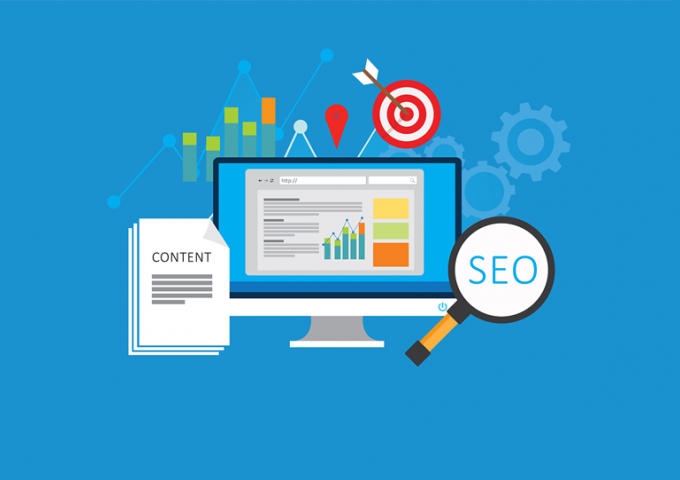Essential marketing terminology for start-ups


When setting up your online store, or even once it’s been up and running for a while, you might be confronted with a myriad of specialist terms you had never heard before. We know that can be quite daunting! No worries, though. We’ve created a list of the most common online/marketing terms for you. The text in italics is explained further down. Is anything missing? Let us know in the comments section!
Affiliate marketing
With affiliate marketing, the affiliates (e.g. partners or other websites) are paid a fee for every sale and/or lead obtained by promoting your product(s) or service(s), e.g. through ads. They join a so-called ‘affiliate network’, which acts as an intermediary between the advertiser and the website administrator.
CPC/CPL/CPM/CTR
In advertising and affiliate marketing, there are various compensation methods:
- Cost Per Click (CPC): the price paid for every click on an ad. You only pay if your ad is clicked on.
- Cost Per Lead (CPL): you get paid based on the number of leads to your website, e.g. in case of requests for information or newsletter subscriptions.
- Cost Per Mille (CPM): you pay a fixed fee per 1,000 ad displays.
- Click-through Rate (CTR): the ratio between the number of people who see an ad or search result displayed, and the number of people who actually click on them.
Content marketing
Content marketing refers to creating, offering and spreading (unique) content (texts, images, videos etc.), which are valuable and relevant for your target audience. Good content ensures people can find you more easily in Google.
Conversion
Conversion happens when a website visit results in the achievement of a certain goal, such as a purchase, a newsletter subscription or registration for a course. Needless to say, in the case of online merchants, the main goal is to sell products or services.
Cookies
Cookies are little files that save your visitors’ user settings. These files allow you to track your visitors’ surfing behavior (via Google Analytics) and publish targeted ads. In some cases, it is obligatory to publish a cookie disclaimer in your online store.
E-commerce
E-commerce is the umbrella term for all selling and purchasing activities via the internet. An example is the purchase of a product in an online store. Supporting activities, such as the processing of online payments, distribution and online marketing, are often also labeled e-commerce.
Google AdSense
Google AdSense is a service that gives website administrators the opportunity to be paid to publish relevant ads on their site. When a visitor clicks on an ad on their website, they are paid (CPC or CPM). Every time someone visits a website that uses Google AdSense, ads are displayed, usually related to the content of the page. An example? An ad for T-shirts on a fashion site.

Google AdWords
Google Adwords allows companies to advertise in the Google search results. The ads appear above and below the organic search results (SEA) and are based on keywords you can choose yourself. Google AdWords also allows you to advertise via the Display Network, through Google search partners and YouTube. Google AdWords uses CPC.
Google Analytics
Google Analytics is Google’s free tool to analyze statistics, such as your visitors’ location, activities and the pages visited. You can then use the results of this analysis to set up online marketing campaigns and/or to better gear your site to your visitors’ surfing behavior.
Google Trends
This is a tool that helps you develop a content-marketing strategy. Google Trends ensures that your content is displayed in the search engine at the right time and in the right place. It is mainly useful to get an insight into the links between keywords and to identify trends (e.g. seasonal trends, hot topics etc.) as well as changes in search behavior. Google Trends can also be used to compare search behavior in different countries.
Google Shopping
Google Shopping is a service that allows shoppers to quickly and easily find visual product mentions via Google, which, in turn, enables them to promptly and efficiently compare products and/or services in various online stores.

Keyword tool
As the term suggests, a keywoord-tool is a tool to find relevant keywords. It is a basic instrument in any keyword analysis. This blog post tells you all you need to know about finding the right keywords for your online store.
Leads
A lead is a request for further information about a specific product or service. Given their interest, the senders of leads can be considered potential customers. Some requests for information do not translate in sales, while others do. Examples of leads are completing contact forms or entering email addresses.
Links
(Back)links are incoming links from other websites, the referring sites. These referrals are a way for Google to measure how popular your site is (link popularity), which, in turn, contributes to a higher ranking in the search engine. This goes hand in hand with link building.
Link building
This refers to obtaining valuable links to your pages on external websites. It is a crucial part of SEO (Search Engine Optimization). Link building goes hand in hand with page ranking.
Metatags
Meta tags are invisible elements containing information (e.g. for web crawlers) about the content of a website or page. Click here to discover how to add meta tags to your pages.
Page ranking
Page ranking (abbreviated as PR) is a method to rank pages based on popularity. It ensures that the most relevant and valued websites appear among the first search results, rather than in alphabetical order. Simply put, the more links to your pages from other websites, the higher the page ranking of those particular pages.
SEA
SEA (Search Engine Advertising) refers to paid ads that are displayed in Google, both above and below the search results (see Google AdSense and Google AdWords).
SEO (Zoekmachineoptimalisatie)
SEO or Search Engine Optimization refers to the continuous improvement of your pages so as to achieve a higher ranking in search engines, based on organic, free results. Paid search results fall under SEA. Search Engine Optimization starts with choosing the right keywords.
SEO factors: these are factors used by search engines to rank the search results. They determine how high you rank in the results. The main factors are technique, content and popularity (see ‘link building’). Have a look at this blog post and discover how to apply SEO in your online store.
Social media
Social media is an umbrella term for various platforms where users share information, experiences, opinions etc. A few well-known examples are Facebook, Twitter, Pinterest and Instagram.
USP
USP stands for Unique Selling Point and refers to the distinctive properties that offer your consumer added value and help you stand out from your competitors.
Keywords
Words or phrases you want to rank your pages on, i.e. the words or phrases you want Google users to use to find your site.
